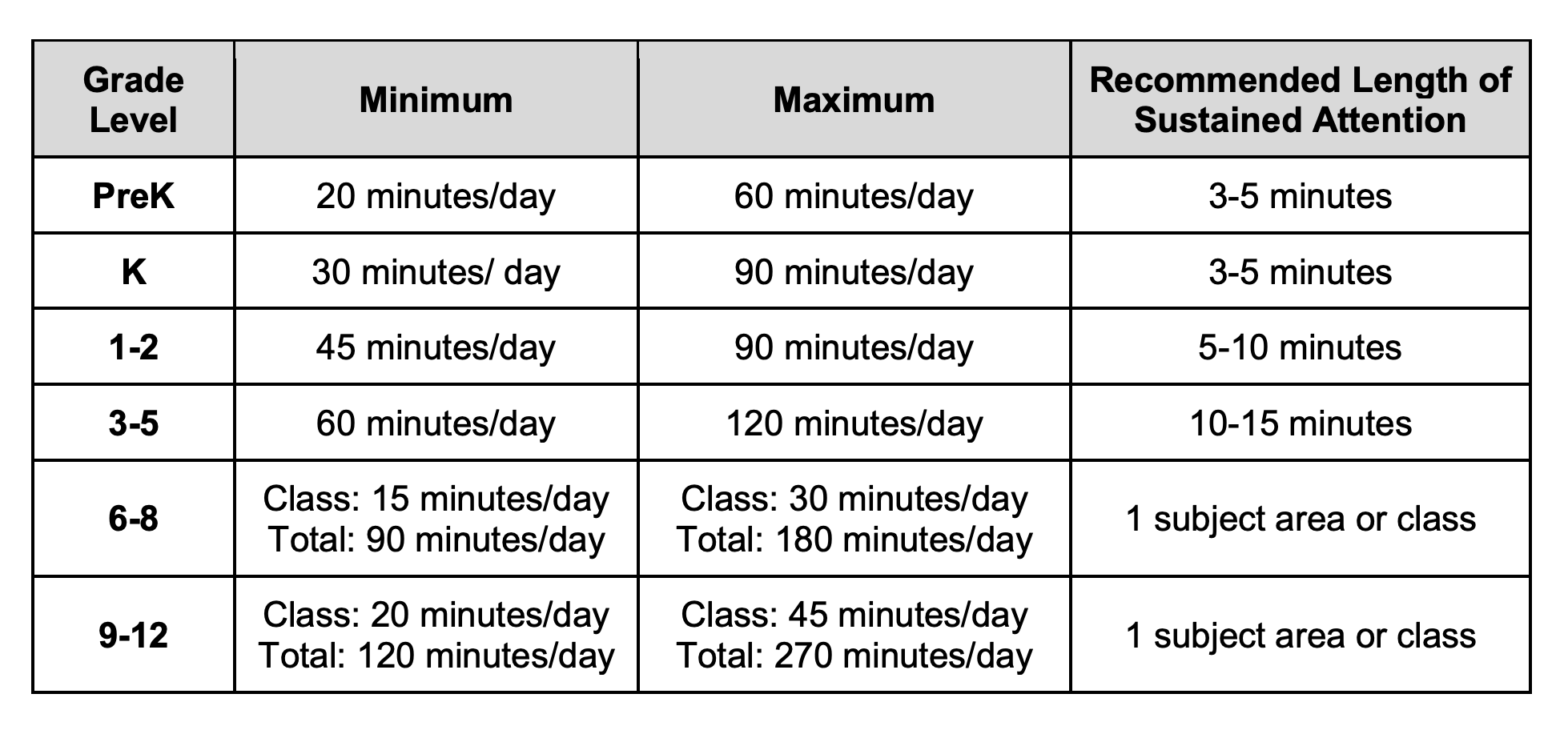Distance learning, remote learning, home schooling: whatever you call it, it’s not easy. Since the COVID-19 pandemic made its way to the U.S., parents have been doing their best to figure out how to teach on the fly, but it’s difficult when most of us don’t really understand what learning at home is supposed to look like. How long do kids need to spend on each subject? Should school still take all day? Also, how the heck do we do this while we’re working? A helpful chart that answers at least some of these questions is making its way around the internet, and the recommendations might have some parents breathing a sigh of relief.
The chart was created by the Illinois State Board of Education and released as part of their recommendations for learning at home. It breaks down educational needs by grade level and shows the minimum and maximum amounts of time kids in every age group should spend on school work each day. Surprisingly, the chart suggests most kids work on school activities for less than two hours per day. It also suggests breaking activities up into shorter units of time. For those in kindergarten and pre-K, it recommends limiting sustained attention to an activity to five minutes or less.

That’s a very different picture of distance learning than most parents probably have in mind. Because a typical public school day is usually seven or eight hours long, many parents feel pressure to mimic an all-day schedule. But the Illinois State Board of Education guidelines stress that learning doesn’t have to take a long time, and it doesn’t only happen during routine lesson times.
To supplement time spent on school work, they also recommend:
- Reading books.
- Going for walks.
- Building with Legos.
Listening to music. - Other fun activities that parents might not traditionally think of as educational.
Every state has their own guidelines for education, and your child’s teachers may be offering different schedules and ideas. But some teachers outside of Illinois tell Care.com this chart is similar to what they’re sending home as well. Elvira Aguilar, a Dallas high school teacher says, “We advise a maximum of 30 minutes a day per subject for high school. Our students that receive accommodations have a schedule for one hour per subject per day, and we’re limiting classwork for electives.”
Meanwhile, on the popular Facebook page School Psyched, a Los Angeles-area elementary school teacher writes, “We asked our parents of second graders to do 20 minutes of out loud or silent reading, 20 minutes of technology programs and 20 minutes of a paper packet we sent daily. Sixty minutes and our parents have commented it’s simple but effective.”
Distance learning during the COVID-19 pandemic is still an imperfect system. In particular, parents of special needs kids are facing difficulties getting the resources their children need. Those in low-income communities are also dealing with a lack of access to resources. Not every child has a laptop or tablet for remote school work, and a 2018 study by Microsoft estimated that about 25 million Americans don’t have access to broadband internet.
Simplified school schedules won’t solve the problems parents face with limited resources and lack of specialized help, but they can offer stressed out parents the reassurance that learning at home doesn’t have to look exactly like learning in a classroom setting. The schedule can be broken up, the “school day” can be shorter and kids can still get educational benefits from doing play activities they enjoy.
The Illinois State Board of Education says they wrote these recommendations because the school board “acknowledges that all students, families, and schools are diverse and supports remote learning that meets local needs, and to the greatest extent possible, minimizes the negative impact this unprecedented moment has on our students’ educational trajectories.”
Parents should be careful to follow the guidelines put forth by their local schools and teachers. But if you’re beating yourself up because your kindergartener got tired after only 10 minutes of math time yesterday, just know that at least by one state’s standards, you’re doing all right.





